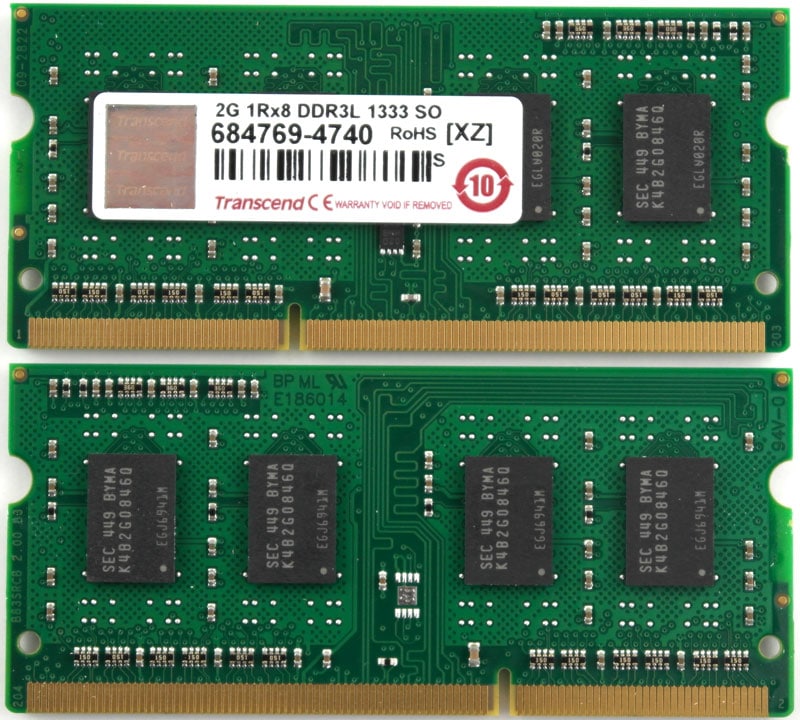Thecus N5810 Pro Zero-Crash 5-Bay High-Performance NAS Review
Bohs Hansen / 10 years ago
A closer look inside
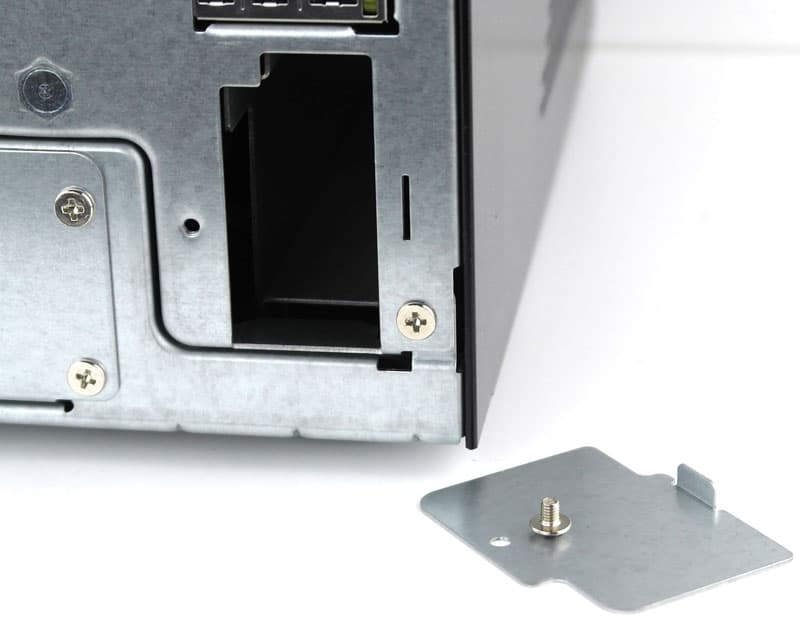
It is time to strip the Thecus N5810 Pro down and see what’s inside, what makes this beast so great. But first let us have a look at the built-in UPS with battery. The UPS is built-in and connected directly to the system, so all you have to do when you receive the unit is to remove the little cover on the backside of the unit and slide the battery in there. You might need to push a little harder to get it fully in there the first time, but it fits.
The connector is a PCIe styled one, a universal and easy to use type of connector and one that delivers more than enough power capabilities.
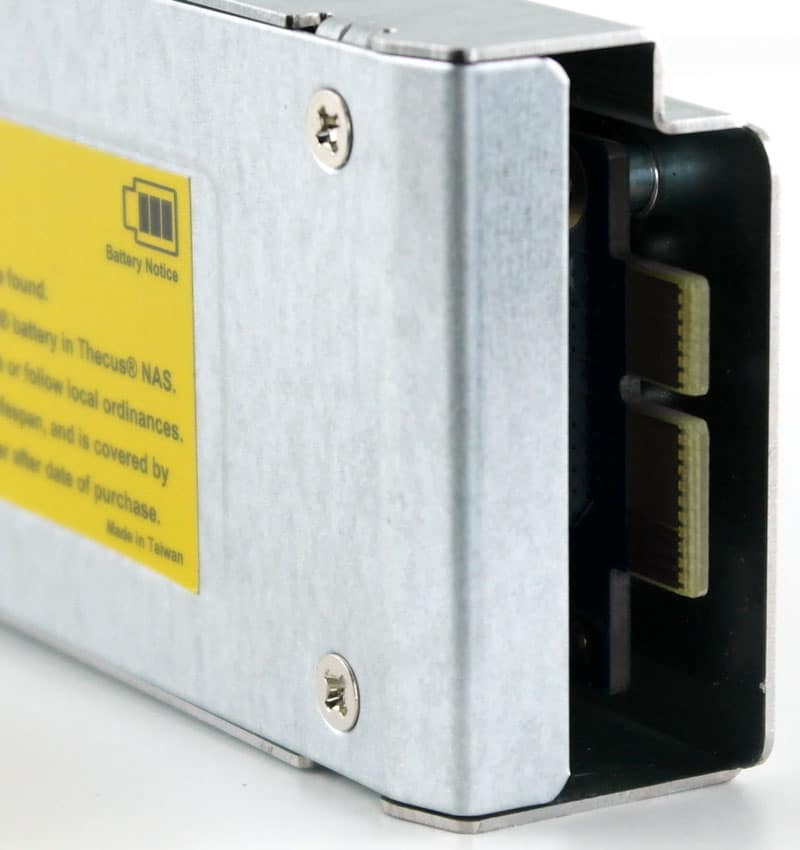
Once the battery is in place, secure it with the screw again and put the little metal cover back in the box so you know where to find it, if and when you need it again.
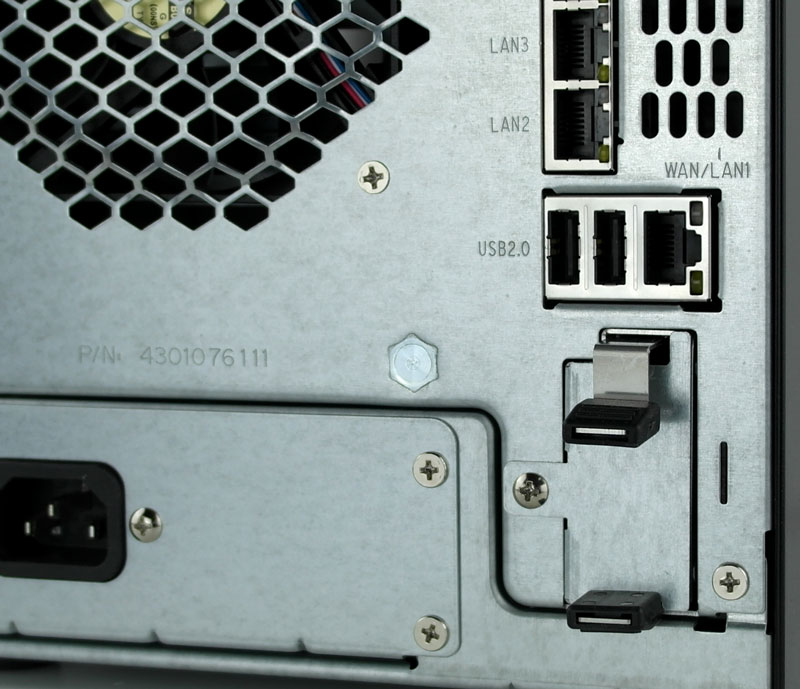
Having removed the top and rear cover, we see the exposed metal frame as well as the front LCM module with buttons.
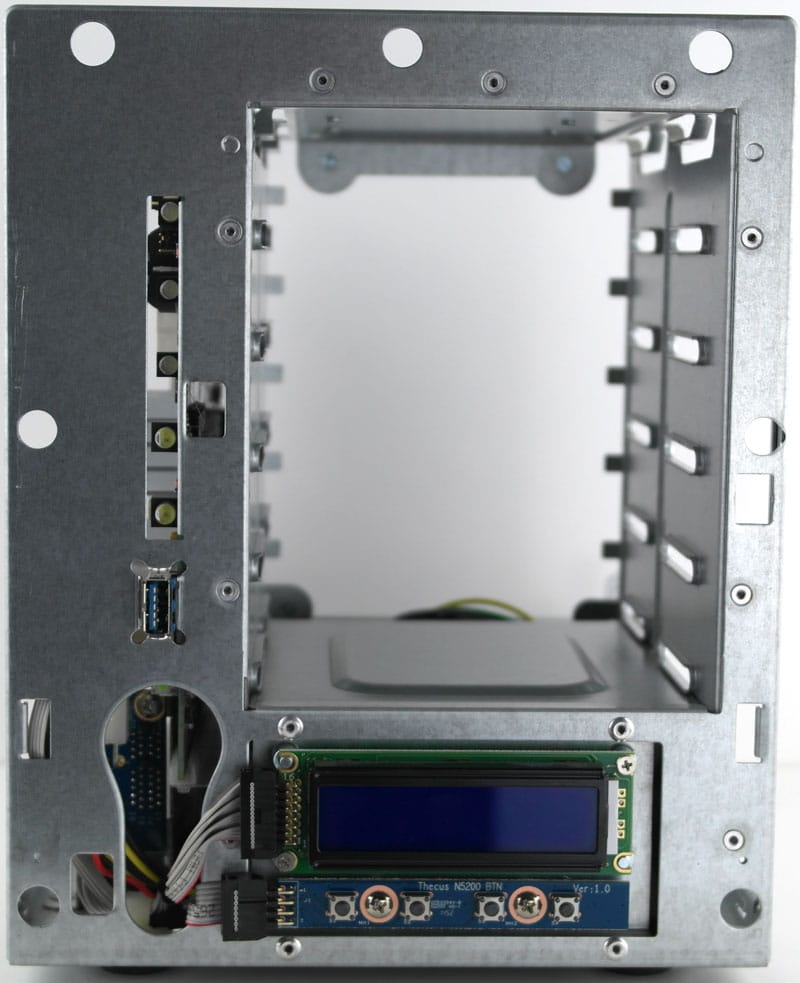
The motherboard slides right out and back in again, that is once you have removed the surrounding parts. Removing the connectors at the bottom right corner can be a bit tricky, but then again, who besides me as a reviewer does that. The RAM slots and DOM module are both easy accessible as soon as the cover is removed, so upgrading them won’t be a problem either.
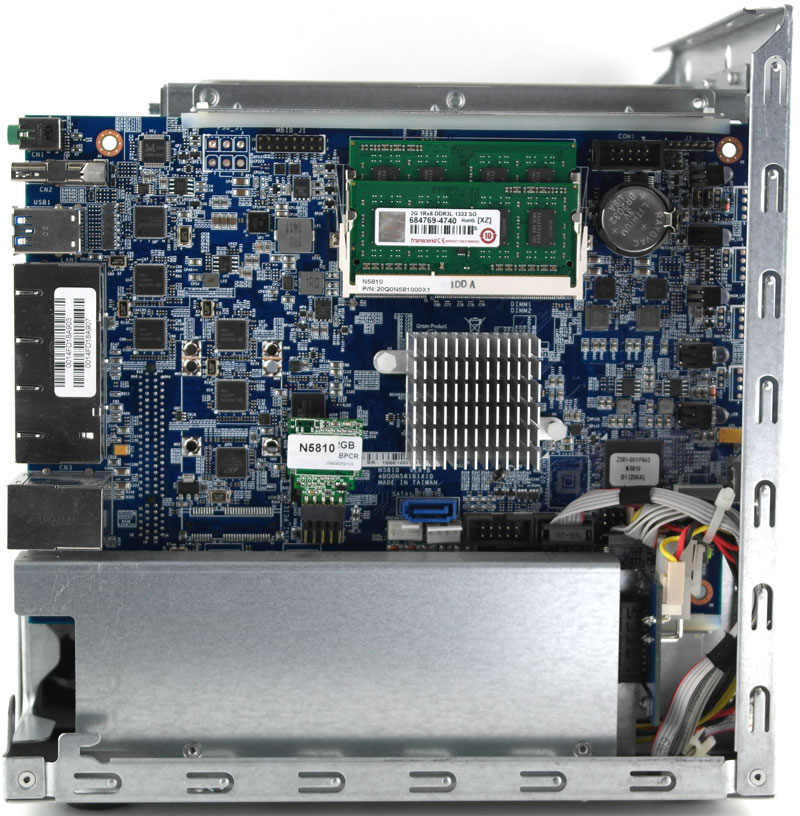
The metal frame is sturdy and stable, a well-built piece of enclosure. The power supply can also be removed and replaced in case it should go faulty after years and years of usage, which is another great bonus.
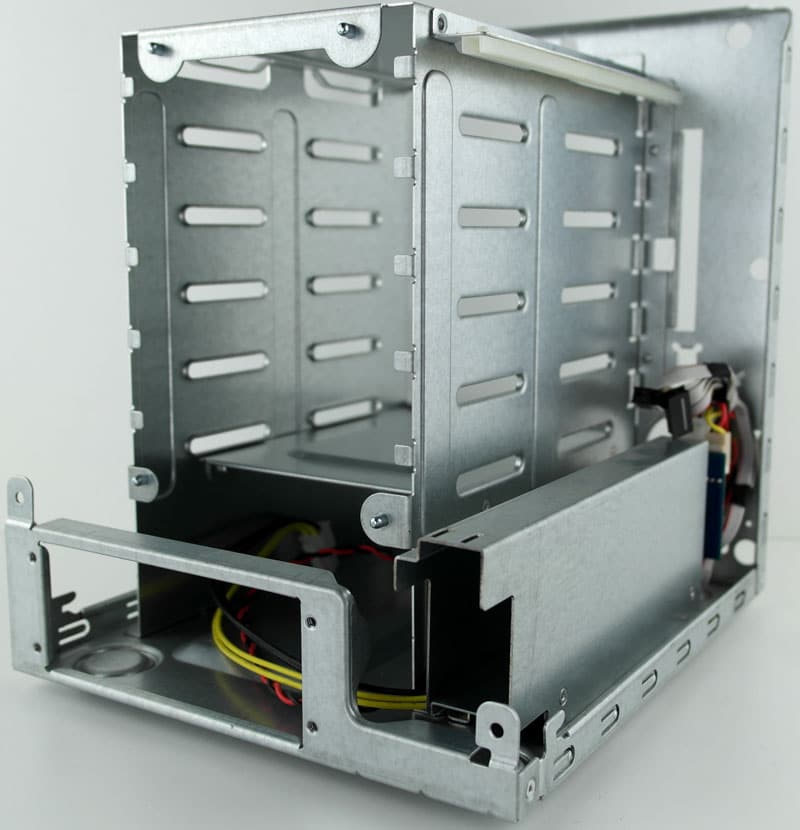
The power supply is 80 Plus Bronze rated and mounted on a sled for easy maintenance. It’s coupled with an extra PCB that is located at the end of the sled and this is used to both distribute the power out of all parts, but also for the built-in UPS to communicate with it.
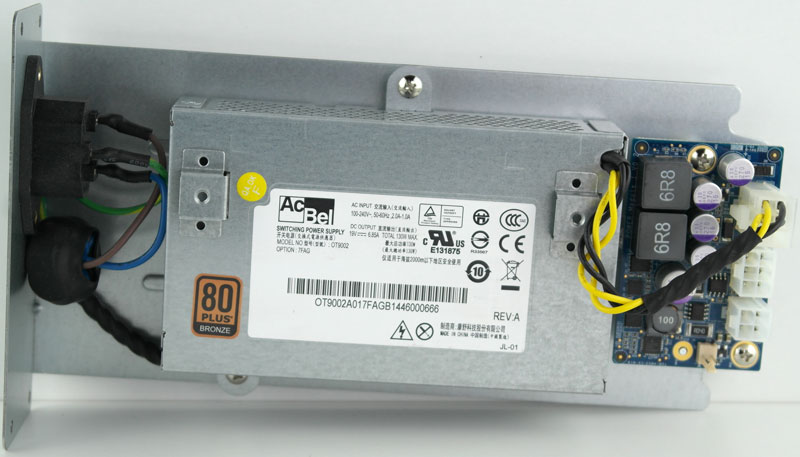
The motherboard is packed pretty tight, and that’s no surprise with the amount of features that the N5810 Pro packs. Besides all the normal features, there also are some unused connectors such as an extra SATA port and COM headers. It even features a 2-diggit display for error codes in case of trouble.
On the motherboard we find five Intel I210 Ethernet Controller chips, an Atmel MEGA168PA multipurpose RIS-based microcontroller, a ASM1442 controller chip and a RealTek ALC262 HD Audio codec chip for the HDMI and line-out. The Marvell 88SE9215 chip provides four SATA3 channels and the while the PLX PEX8605-AB50NI chip provides a 4 lane/4 port PCI Express Gen 2.0 switch.
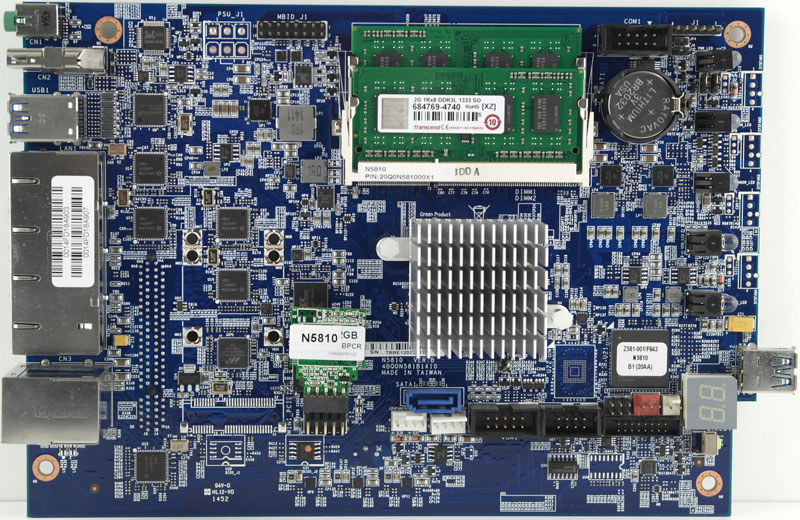
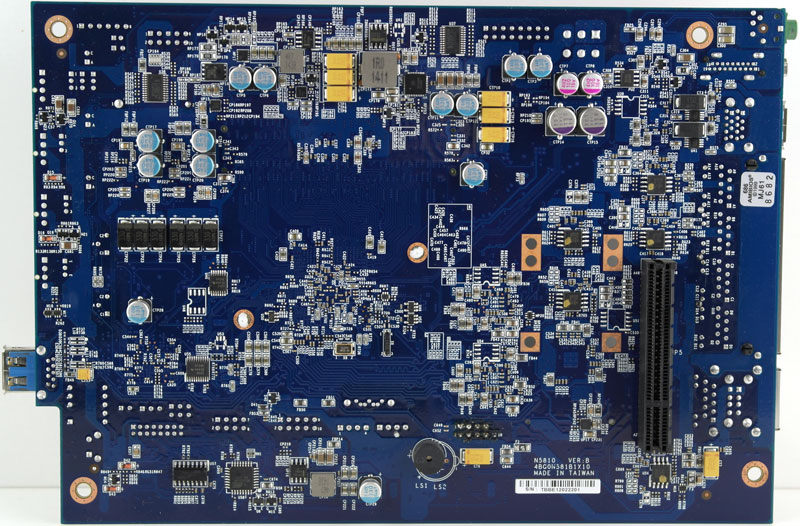
The PCIe backplate for the hard drives is kept very simple, but it does have its own dedicated power connection to the power supply. This is great to see and something that will provide your hard drives with a better and more stable power connection. A pure PCIe connection is on the limit when talking 5-bay NAS and what hard drives can draw under peak loads.
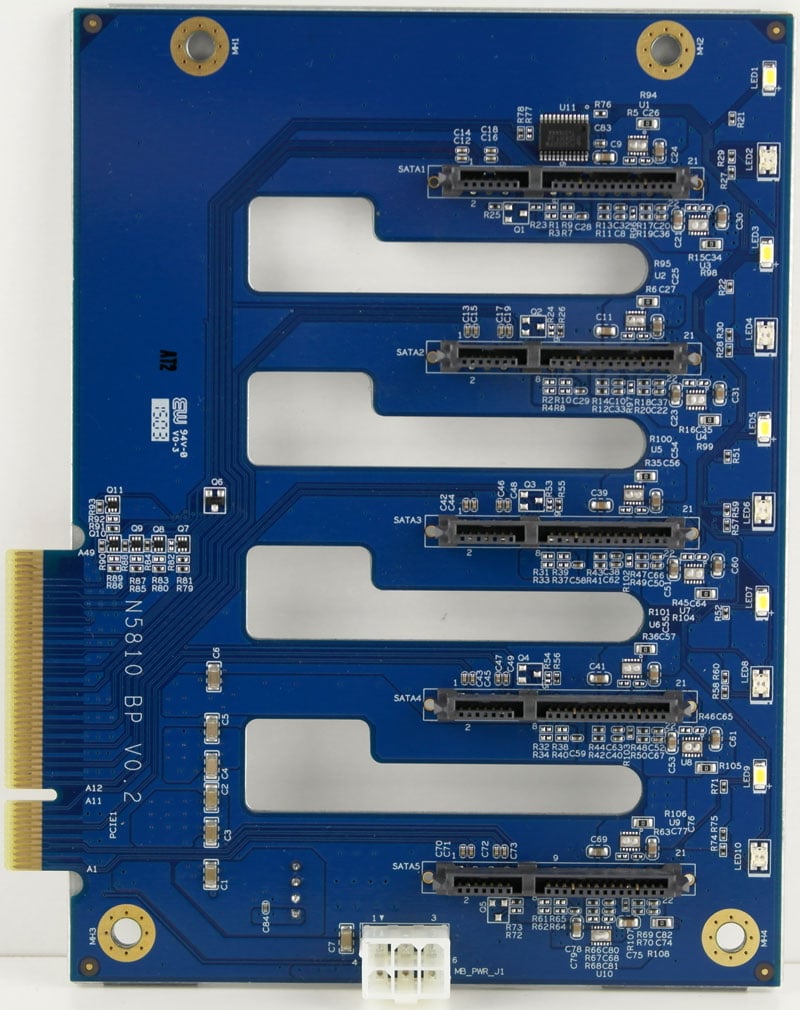
The 2GB DOM used is USB based and made by Afaya, now merged with UDinfo. It has 2 GB capacity and that is plenty for our NAS needs.
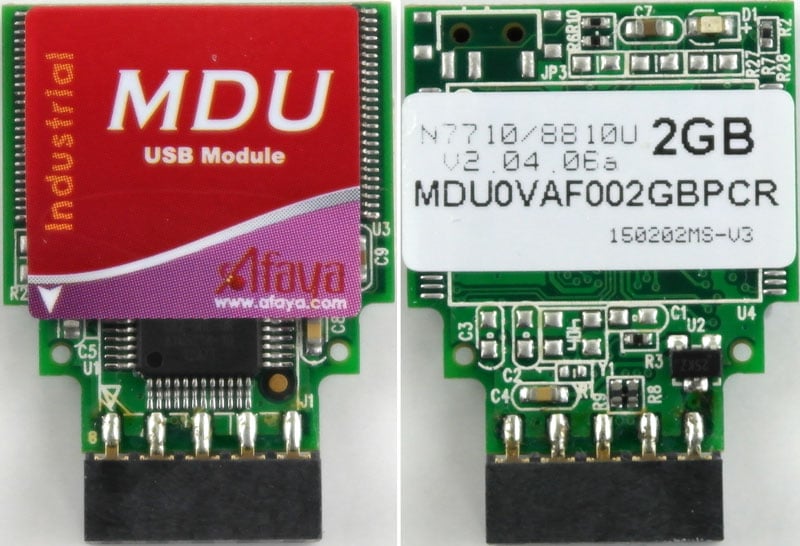
The two DDR3 SODIMM RAM modules used are made by Transcend and run at 1333MHz.
